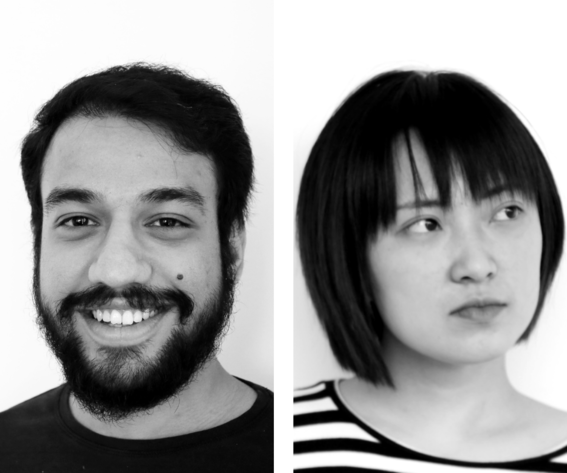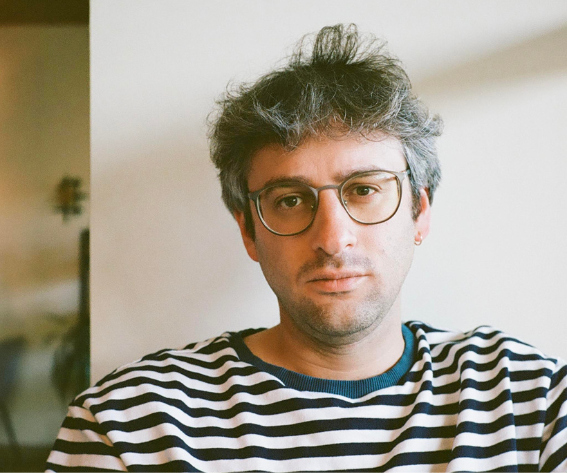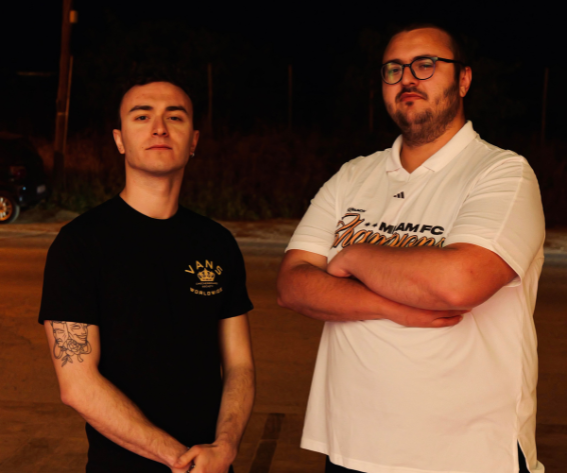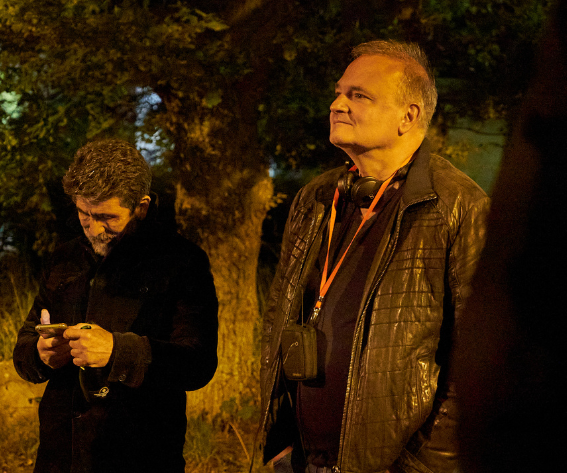It’s not often that we have an experimental film based on empirical research as our Film of the Month winner – thankfully, we’ve had the honour of doing just that in February 2021. Counterpoductive is a film that explores the consequence of algorithmic bias in artificial intelligence, that fits in a dystopian but not too distant vision of the future. Directed by Eva Tisnikar, it is the creation of two students – Ravin Raori and Yuqing Liu – with whom we had a very interesting chat.
JL: Our sincere congratulations for your work on Counterproductive, to both of you. I think I’m speaking on behalf of the entire TMFF team when I say how impressed we were about the themes explored in here, as well as the visual design per se.
JL: The film was released very recently – has it been warmly received so far?
RR: Hi there! I’m Ravin Raori. Thank you so much for inviting us to the interview. It’s a pleasure to be here and an honour to have been featured and awarded by your esteemed institution. The film has been received extremely well and has been featured at several art and film festivals. We’ve also been getting several awards and nominations. All that being said, this journey for us stemmed from a desire to talk about gender issues in technology and be able to reach a wide enough audience. So, while we are extremely proud of the opportunities and commendations we’ve received in showcasing the work, we are even more proud of the fact that people understood the message. That for us, was the biggest validation.
JL: The behaviour of artificial intelligence and the algorithms on which it functions is becoming a topic of ever-increasing importance in today’s technology-driven world. How did the idea of expressing this into film form come about?
RR: Both Yuqing and I are architects and installation artists working with creative technologies for performance and interaction. We were looking to build our work in this field a live robotic exhibition featuring these technologies, so people could come, interact with them and understand first-hand some of these issues. However, in light of the pandemic and no possibility of a live exhibition, we needed to re-think our approach and find a medium of expression that would still allow us to reach a wide non-industry specific audience. This is where the idea to make a film, but more importantly to use narrative as a tool came from.
JL: Yuqing, we are very curious about your research. In short terms, what was the aim, the used methods and the result?
YL: Ravin and I were mainly looking at machine learning algorithms in smart technology and AI powered systems. We wanted to investigate the mechanisms of training such technologies and identify the causes of the problems they create. This involved taking a deep dive into the word of algorithms, algorithmic bias, training data and data transfer mechanisms. Our research led us to the conclusion that biases in technology are often representative of biases in the real world. There is a real lack of inclusion in algorithms and machines, just as there is in society.
JL: Is there anywhere where we can read more about your research?
RR: Yes, most definitely. Our research has been published by the Interactive Architecture Lab, an interdisciplinary research lab focused on the performance and interaction arts at University College London. One could follow this link to read more about our research.
http://www.interactivearchitecture.org/lab-projects/counterproductive
The project was supervised by Dr. Ruairi Glynn, Dr. Kevin Walker and Ms. Jessica In, without whom this project would not have been possible. We would like to take this opportunity to thank them all for their help as well as everyone else that embarked on the journey making this film with us.
JL: What was the process behind the visualisation of gender biases, and choosing corresponding symbols for them – the various home appliances?
RR: The idea was to extrapolate a very underlaying issue and state it in a manner that the average non-industry person could understand. In order to do this, we had to understand how gendered biases occur in the daily interactions of men and women and then further attribute those biases to machines imbued with personality as if they were real people. This attribution is backed by our research in the causes of these biases in technology and are streamlined iterations of three of those causes. What if your Kettle expected you to smile more as a sort of positive affirmation for how it interacts with you? This is something that women face in their daily interactions with men and serves as one example to explain how we translated these symbols.
JL: It seems that you really put a lot of thought into designing the HomeTech devices. How did you bring them to life – were they 3D printed?
RR: As part of the world making for the film, we wrote a lot of backstory for the characters, developed a lot of concept art for the film and even used real-life inspiration from technology advertisements in the past and present. We really wanted to think of HomeTech as a brand. A brand that represents the problems with the ever-increasing dependence on AI-powered technology and smart home assistants, well at least in their current state. The devices were 3D printed and assembled as interactive robots capable of reacting and responding to its users in real time. It was amazing to see them interact and behave as characters in the film creating dialogue with the (human) actor. The physical fabrication involved 3D-printing however there was also a lot that went into programming these robots, using Arduino and Fade Candy micro-controllers amongst a variety of other software and engineering tools.
JL: Judging by the small cast and the use of the apartment as the predominant setting, the film seems to have been shot during Covid-19. Do you think Counterproductive would have looked any different if the pandemic hadn’t been a thing.
RR: It’s hard to say what the film would have looked like outside of the pandemic or if there would have even been a film of this nature. I think we went into this accepting the pandemic as our reality and aspiring to do the best we can in this new hybrid world where the physical and digital realms of art-production are more entwined than ever before.
JL: Following up on the idea above, but not necessarily relating to it specifically – do you think that sometimes, constraints actually foster creativity, instead of hampering it?
RR: Absolutely. I think creativity isn’t born necessarily out of a lack of rules, but rather through exploring the possibilities within a framework set by a given set of rules and constraints. We treated the COVID constraints as our project brief and as said before our reality, and proceeded with that assumption throughout. That being said, there were several hurdles to cross as a consequence of the constraints but it allowed us to re-think the ways in which we express ourselves and there is always beauty and wonder to be found in that endeavour.
JL: Thank you very much for your insights! Your film has really been a breath of fresh air, and we hope to see more cool stuff from both of you in the future!
RR: Thank you so much for giving us the opportunity to do this interview. It’s been lovely chatting with you. We also thank again for recognising our work and giving us a platform to be able to express ourselves and reach out to people. It’s been an honour being associated with your institution and we both hope to continue to do so in the future.









Leave a reply